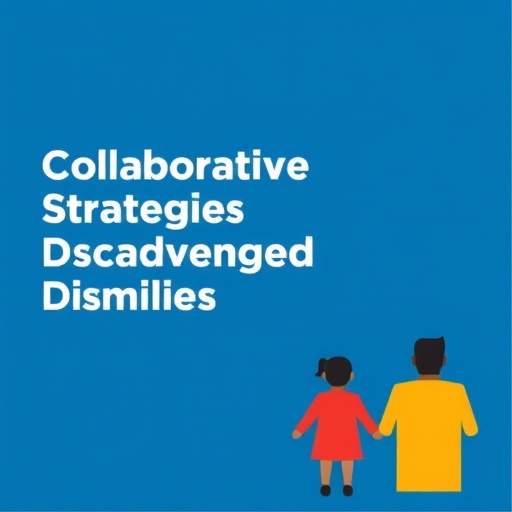In an ever-evolving landscape, educators are increasingly recognizing their critical role in championing the needs of socio-economically disadvantaged children and families. The importance of kindergarten teachers in this endeavor cannot be overstated, as they work diligently to create inclusive environments that foster learning and development. A seminal piece of research by Keung highlights the multi-agency collaboration necessary to support these vulnerable populations effectively. The study provides invaluable insights into the perceptions of kindergarten teachers and their experiences in navigating the complexities of multi-agency work.
Teachers are often at the frontline of identifying challenges faced by children from low-income households. Their observations frequently serve as the first line of defense in addressing potential obstacles to learning. By drawing insights from their direct interaction with children and families, educators can pinpoint issues that extend beyond academic performance, including social and emotional welfare. This recognition is crucial, as a child’s ability to succeed in a learning environment is inextricably linked to their overall well-being and family dynamics.
What does it mean to work within a multi-agency framework? In essence, it entails collaboration among diverse organizations, such as social services, health care providers, and educational institutions. Each agency brings a unique set of skills and resources to the table, allowing for a holistic approach to addressing the multifaceted needs of children. When kindergarten teachers successfully engage in these partnerships, they can leverage additional support for their students, ensuring that no child is left behind due to systemic barriers.
This study sheds light on the varying perceptions among kindergarten teachers regarding their roles in multi-agency collaborations. Some educators view themselves as effective liaisons who can bridge gaps between families and service providers. Others, however, express concerns about the adequacy of their training for such collaborations. These differing perspectives highlight the necessity for professional development opportunities that equip teachers with the skills needed to effectively navigate the intricate web of services available to families.
Moreover, the research indicates that communication plays a pivotal role in the success of multi-agency collaborations. Teachers emphasized the necessity for open lines of dialogue between agencies, as well as between the agencies and the families they serve. Yet, barriers exist that often inhibit fruitful communication. Time constraints, lack of resources, and inconsistent messaging from different agencies can create challenges that teachers struggle to overcome.
The emotional weight of the work undertaken by kindergarten teachers cannot be overlooked. Many educators report feeling overwhelmed by the complexities involved in supporting socio-economically disadvantaged families. The emotional toll may not only impact their professional performance but also their personal well-being. Consequently, additional mental health resources and support systems for teachers are essential to ensure they have the resilience necessary to continue their invaluable work.
In parallel, the study underscores the role of community engagement in fostering a supportive network for disadvantaged families. By strengthening ties within the community, teachers can facilitate access to vital resources, from food assistance programs to mental health services. Engaging families in community activities not only helps build trust but also empowers them to seek the support they need. This symbiotic relationship is fundamental to the overall success of the children.
Financial resources are another critical element affecting the outcomes of these collaborations. Adequate funding for multi-agency initiatives can significantly enhance the availability and quality of services provided to children and families. When financial constraints limit resources, the scope and impact of programs can diminish, leaving educators to fill the gaps. Teachers call for increased advocacy at institutional levels to secure the funding required to sustain robust support systems.
Additionally, the digital divide remains a pressing issue as families increasingly look to online resources for assistance. While many agencies have adapted by providing services online, not all families have the necessary access to technology or the internet. This divides can exacerbate existing inequalities, further marginalizing vulnerable populations. Teachers emphasize the importance of ensuring that all families can access necessary information and resources regardless of their technological capabilities.
The advocacy of kindergarten teachers within the multi-agency landscape is multifaceted. Beyond their roles as educators, many are becoming champions for policy changes, striving to influence legislation that affects educational funding and the availability of social services. Their on-the-ground insights grant them a unique perspective that can inform more effective policies.
Ultimately, the research underscores that supporting socio-economically disadvantaged children is not merely the responsibility of educators but requires a collective effort from multiple stakeholders. Policymakers, community organizations, and families all have roles to play in cultivating an environment that facilitates learning and development. Collaboration will be key to ensuring that children have equitable opportunities for success.
The implications of this study are profound, suggesting that future strategies for supporting disadvantaged children must be informed by the voices of those on the frontlines. Investment in teacher training, community resources, and policy advocacy will be imperative as educators strive to create optimal conditions for learning. The path forward requires courage, resilience, and a commitment to ensuring that every child, regardless of socio-economic status, has access to the support they need.
In closing, the research findings challenge everyone involved in child education and welfare to reflect on their roles. It is clear that socio-economic disadvantages can influence children’s educational trajectories significantly. By fostering multi-agency collaborations and bolstering educator resources, society can help to level the playing field for all children, providing them with the spirited support they deserve as they embark on their academic journeys.
Subject of Research: Supporting socio-economically disadvantaged children and families through multi-agency collaboration.
Article Title: Supporting Socio-Economically Disadvantaged Children and Families through Working with Multiple Agencies: Perspectives of Kindergarten Teachers.
Article References:
Keung, C. Supporting Socio-Economically Disadvantaged Children and Families through Working with Multiple Agencies: Perspectives of Kindergarten Teachers.
IJEC (2025). https://doi.org/10.1007/s13158-025-00455-z
Image Credits: AI Generated
DOI: 10.1007/s13158-025-00455-z
Keywords: socio-economic disadvantage, education, multi-agency collaboration, kindergarten teachers, community engagement




